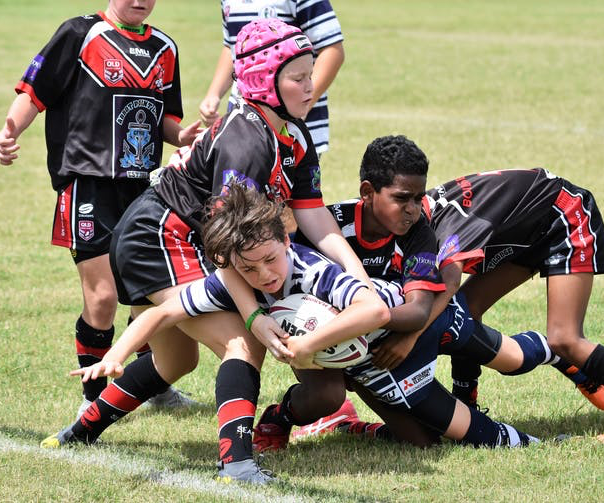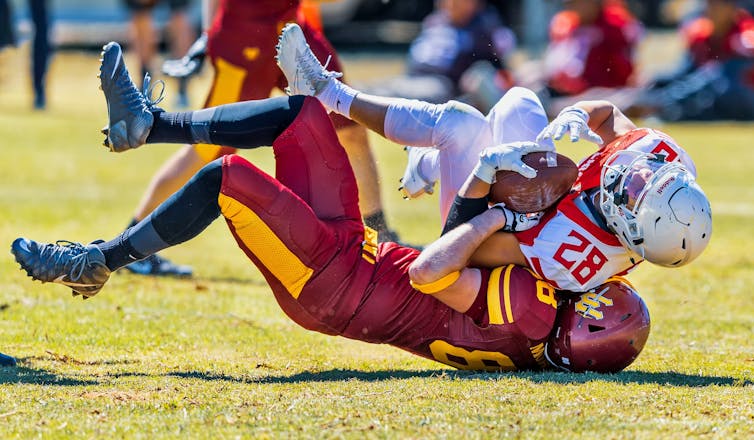
Rule changes, training strategies and equipment recommendations can help protect youth athletes from concussion. (Unsplash) Carolyn Emery, University of Calgary
While sports facilities and leagues are still gauging how and when to reopen in the wake of the coronavirus, now is the best time to think about concussion prevention: before young people get back on the playing field.
The benefits of sport and physical activity are significant, and yet, every day young people put themselves at risk of concussion through participation in sports. The highest concussion incidence rates among youth in Canada are seen in rugby, ice hockey and football.
We expect one in 10 Canadians ages 13 to 18 to seek medical attention every year for a sport-related concussion. Forty per cent of these youth have experienced a previous concussion, and 20 per cent will have a variety of persistent symptoms for longer than one month.
These symptoms may include headache, dizziness, sleep disturbance, cognitive difficulties or depression. Long-term consequences of concussion in youth may also include reduced levels of physical activity, overweight or obesity, psychosocial consequences and significant health-care costs.
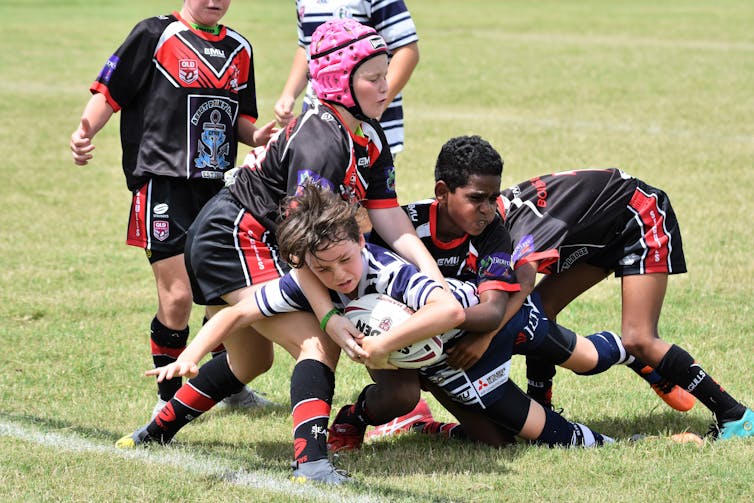 Rugby, hockey and football have the highest concussion incidence in Canadian youth. (Unsplash/BJ Pearce)
Rugby, hockey and football have the highest concussion incidence in Canadian youth. (Unsplash/BJ Pearce)
As chair of the Sport Injury Prevention Research Centre (faculty of kinesiology, University of Calgary), I lead a research program that aims to reduce the burden of youth concussion in Canada. The best way to do that, and to keep kids active in the sports they love, is by moving towards prevention. Providing a safe environment for youth to participate in sport is critical to ensure lifelong participation in sport and recreation. As such, a key public health priority should be concussion prevention in youth sport to promote an active lifestyle in all Canadian youth.
How can we prevent concussion in youth sport?
Research has shown that rule changes, training strategies, equipment recommendations and legislation of evidence-informed management protocols can all help to prevent concussion and the recurrence of concussion in youth sport.
Rule changes may be the low-hanging fruit in reducing the risk of concussion in youth sport. In 2010, we demonstrated a four-fold greater risk of concussion in 11- and 12-year-old ice hockey players when body checking was allowed in games at all levels of play, compared to Québec where body checking was not allowed.
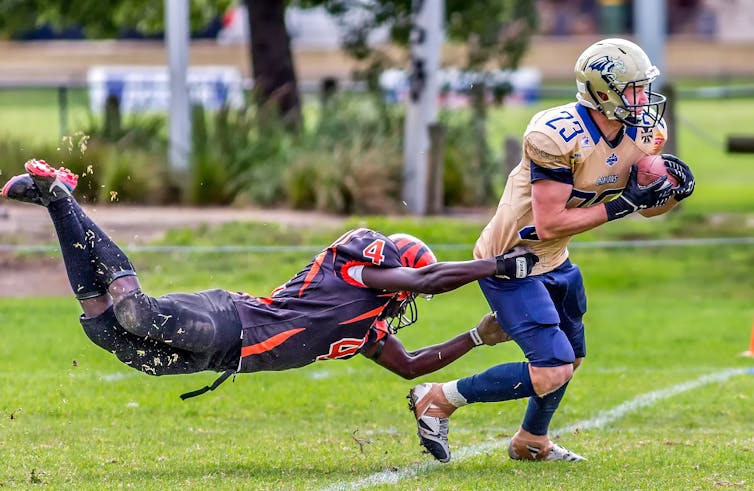
Every year, one in 10 youth athletes seeks medical attention for concussion. (Unsplash)
This study, among others, informed a 2013 Hockey Canada national policy change delaying body checking until age 13. This led to a 64 per cent reduction in concussion rates, preventing over 4,800 concussions nationally each year in young players, and keeping more players in the game.
This research further informed local and provincial policy change in non-elite levels of play (70 per cent of players by division of play) in older age groups (ages 13-17). Evidence in 13- and 14-year-old non-elite ice hockey leagues supports a policy disallowing body checking in games, with a 54 per cent reduction in all injuries and estimated prevention of 4,000 injuries in 13- and 14-year-old players annually in Canada.
If body checking continues to be disallowed in games in 11- and 12-year-old leagues and non-elite levels in 13- to 17-year-old leagues, the public health impact would be the prevention of 10,000 concussions annually.
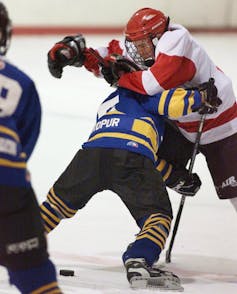
One of Canada’s largest hockey associations will ban bodychecking for peewee players. THE CANADIAN PRESS/Andrew Vaughan
Prevention should be our priority, but not everyone involved in the game sees it this way. Some parents believe that delaying body checking to age 13 may reduce concussion risk but that this policy will also reduce their child’s opportunities to play at elite and professional levels.
In Canada, 70,000 11- and 12-year-old ice hockey players are registered annually. Possibly 70 of these kids may have an opportunity to compete in the National Hockey League (one in 1,000) and perhaps 7,000 may continue to play in an adult recreational league.
One might argue that the other 62,930 young players should be our public health priority. Our goal should be to keep these kids in the game for lifelong participation in sport and recreation.
Another rule change targeting concussion prevention in youth sport includes limiting full-contact play during football practice.
Other evidence-informed prevention strategies include sport-specific neuromuscular training (NMT) warm-up programs (including aerobic, balance, strength, agility) that have been shown to reduce the risk of all injury, including concussion, by more than 35 per cent across multiple team sports including soccer, rugby, basketball and in physical education.
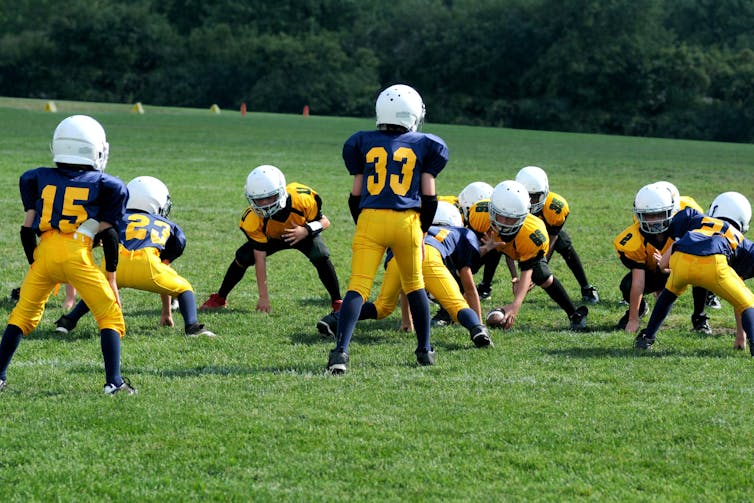
Limiting full-contact play during practices may help prevent concussion in youth football. (Unsplash/Ben Hershey)
We should not underestimate the potential of preventive equipment including mouth guards with recent evidence demonstrating that wearing a mouth guard (off the shelf or custom fit) reduced odds of concussion in youth ice hockey players by more than 60 per cent. Helmet fit criteria have also been developed and evaluated in youth ice hockey and tackle football, suggesting the potential for a protective effect and reduced concussion severity with optimal helmet fit.
Can concussions lead to catastrophic outcomes?
Catastrophic outcomes following concussion in youth sport are rare, however we should work to ensure that not one more child dies following concussion. Rowan Stringer was a 17-year-old high school rugby player who suffered multiple concussions in one week in 2013 and died as a result of her injuries. Stringer’s lasting legacy is Rowan’s Law that was subsequently introduced into Ontario legislation following her death.
Rowan’s Law is a wake-up call to sport associations, sport facilities and schools to implement concussion protocols mandating the removal from play of any youth athlete with a suspected concussion. Rowan’s Law also makes concussion education mandatory for certain individuals involved with youth sport. Additionally, it informs appropriate protocols for concussion follow-up including assessment by a physician and adherence to evidence-informed return-to-sport and return-to-school guidelines.
The Canadian Guidelines on Concussion in Sport were informed by the International Consensus on Concussion in Sport, available online at Parachute along with other evidence-informed concussion resources.
Canadian researchers raising the bar
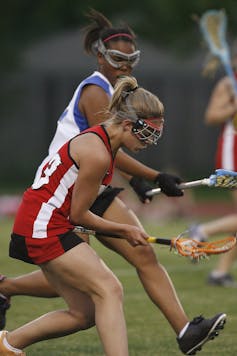
Sports with high concussion risk include hockey, football, rugby, lacrosse, wrestling, ringette, soccer, basketball, volleyball and cheerleading. (Pixabay)
Through a research program funded by the NFL’s Scientific Advisory Board, our team at the Sport Injury Prevention Research Centre is leading a pan-Canadian multidisciplinary research group focused on the prevention, detection, diagnosis, prognosis and management of sport-related concussion in youth. SHRed Concussions (Surveillance in High School to Reduce Concussions and their Consequences in Youth Sport) is the first study of its kind in Canada. It aims to recruit 6,000 high school athletes (ages 13-18) in 60 schools (in British Columbia, Alberta, Manitoba, Ontario and Québec), with followup over three years.
The goal of SHRed Concussions is to raise the bar in youth sport-related concussion research and to inform a significant public health impact in the reduction of sport-related concussions and their consequences in youth across multiple sports including tackle football, rugby, ice hockey, lacrosse, wrestling, ringette, soccer, basketball, volleyball and cheerleading.
Why are we so afraid of change?
Canada’s youth are our biggest and most important natural resource. Rowan Stringer reminds us every day that there is a lot to do to keep sports safe and prevent sport-related concussions in youth. We must ensure legislation is in place for concussion prevention and management protocols to minimize the risk of catastrophic outcomes and reduce the burden of concussions in youth sport.
The benefits of changing the rules of the game, safety equipment legislation and evidence-informed training strategies have been significant in reducing the burden of concussion in youth sport. Evaluation of concussion prevention strategies is ongoing across multiple youth sports. Our priority must be to keep all youth participating in sports and also physically active for life.
![]()
Carolyn Emery, Professor, Sport Injury Prevention Research Centre, Faculty of Kinesiology, University of Calgary
This article is republished from The Conversation under a Creative Commons license. Read the original article.
"Voices of the RSC” is a series of written interventions from Members of the Royal Society of Canada. The articles provide timely looks at matters of importance to Canadians, expressed by the emerging generation of Canada’s academic leadership. Opinions presented are those of the author(s), and do not necessarily reflect the views of the Royal Society of Canada.
